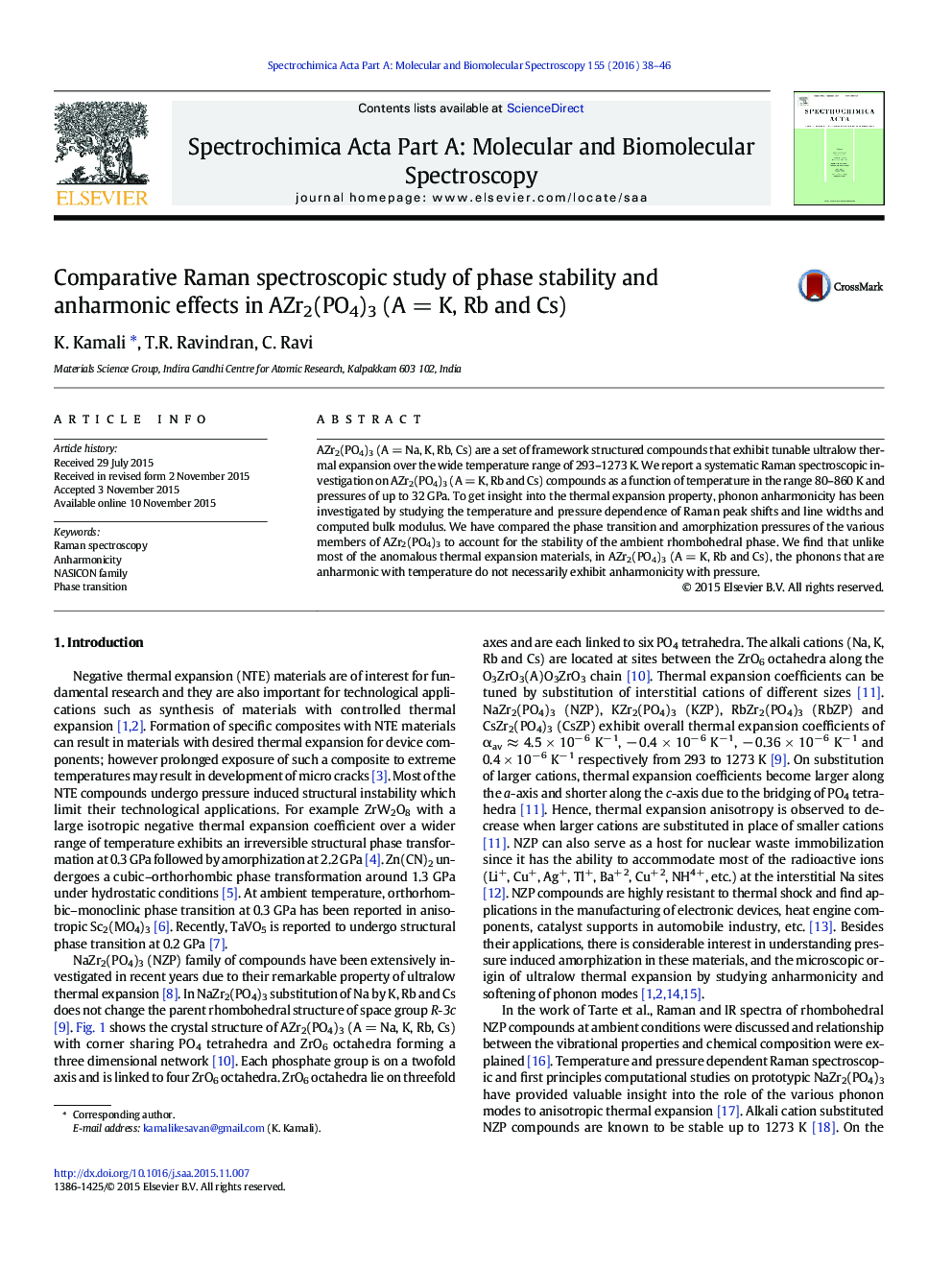| Article ID | Journal | Published Year | Pages | File Type |
|---|---|---|---|---|
| 1231566 | Spectrochimica Acta Part A: Molecular and Biomolecular Spectroscopy | 2016 | 9 Pages |
•KZP and RbZP show phase transitions around 3.5 and 2.5 GPa respectively.•Whereas CsZP exhibits two phase transitions at 3.4 and 8.4 GPa.•NZP was found to be stable up to 32 GPa but compounds with larger cationic size amorphize at progressively lower pressures.•Soft modes are responsible for structural instabilities at high pressures.•Bulk modulus is computed to calculate isothermal Gruneisen parameters.
AZr2(PO4)3 (A = Na, K, Rb, Cs) are a set of framework structured compounds that exhibit tunable ultralow thermal expansion over the wide temperature range of 293–1273 K. We report a systematic Raman spectroscopic investigation on AZr2(PO4)3 (A = K, Rb and Cs) compounds as a function of temperature in the range 80–860 K and pressures of up to 32 GPa. To get insight into the thermal expansion property, phonon anharmonicity has been investigated by studying the temperature and pressure dependence of Raman peak shifts and line widths and computed bulk modulus. We have compared the phase transition and amorphization pressures of the various members of AZr2(PO4)3 to account for the stability of the ambient rhombohedral phase. We find that unlike most of the anomalous thermal expansion materials, in AZr2(PO4)3 (A = K, Rb and Cs), the phonons that are anharmonic with temperature do not necessarily exhibit anharmonicity with pressure.
Graphical abstractFigure optionsDownload full-size imageDownload as PowerPoint slide
